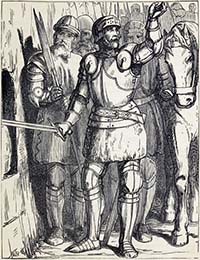Seriously,
how could you resist? There are pulp
novels, and B-pictures, with titles made for the bottom half of a double bill
on the drive-in circuit. (A phenomenon
that doesn’t exist anymore, of course, and that’s half the point.) It’s a marketing ploy, sure, but it’s a
conscious esthetic choice. I Spit on Your Grave, from 1951, falls somewhat
short of its lurid promise, while I
Married a Monster from Outer Space delivers quite nicely – never an expressive
actor, Tom Tryon is as flavorless as a boiled rutabaga – although you never
know. Sometimes the tease is exactly
that, an empty handshake.
Short Cut to Hell, which I stumbled across on YouTube, is less than the sum of its parts, but some of those parts are pretty juicy. The opening shot, with Yvette Vickers sashaying down the hotel corridor in a skintight dress, is a visual the rest of the movie can’t begin to live up to, the male gaze made flesh. And the long third-act set piece on the assembly line of the aluminum foundry is terrific. Short Cut to Hell is the only picture James Cagney ever directed, an oddity by itself, apparently as a favor to the producer, A.C. Lyles. It’s a remake of This Gun for Hire, and doesn’t even come close. The lead isn’t bad, but he’s got nothing on Alan Ladd. The two actors that show the most chops are Georgann Johnson, who did a lot of TV, early and late, and should have gotten better parts and more airtime, and Orangey the cat, a two-time winner of the Patsy award (Rhubarb and Breakfast at Tiffany’s). The rest of the cast is wallpaper.
The rewrite is credited to Ted Berkman and Raphael Blau (collaborators on Bedtime for Bonzo), based on a screenplay by W.R. Burnett and Albert Maltz, who shouldn’t need an introduction - The Asphalt Jungle and High Sierra are Burnett’s; Maltz did Mildred Pierce and The Naked City – and they adapted the Graham Greene novel. The director of photography is Haskell Boggs, best known for three Jerry Lewis pictures (along with I Married a Monster from Outer Space, as it happens), and he shot Short Cut to Hell in black-and-white VistaVision. I’ve talked about this process before; it was a widescreen competitor to Cinemascope, that lasted from the middle 1950’s into the middle 1970’s, and has been used since mostly for special effects work, Star Wars, for example. VistaVision used two frames, side-by-side, which gave it enormous depth of field, and color saturation (Hitchcock loved it). When you shoot with it in black-and-white, you get deep, deep blacks. For example, in Short Cut to Hell, in the factory floor scene, the patrol cops are wearing leather jackets, and you see the light catch the folds in the leather. That, boys and girls, is good cinematography. You have to wonder what John Alton, the great black-and-white DP who shot Raw Deal and T-Men, among others, might have done with it, if he’d had the chance.
You see where I’m going. Short Cut to Hell is a great title, but it isn’t a great picture, by any stretch. There are plenty better. All the same, it’s got bits that stick to the ribs. I wouldn’t call it adventurous; Cagney uses a pretty conventional format, and except for Georgann, as noted, the acting is generic. The best thing about it is the look Haskell Boggs brings to the shadows. So, watch the beginning, and then skip through, until about 58 minutes in, to the factory chase scene, which is gonna hold your attention. The rest, not so much.

























.jpg)


